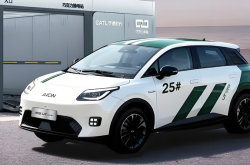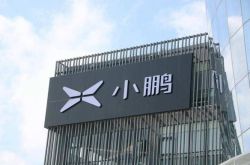2025 Ushers in a New Era for New Energy Vehicle Enterprises: Embracing AI and Going Global
![]() 01/20 2025
01/20 2025
![]() 633
633
Text / Sansheng
For the new energy vehicle industry, 2024 stands as a landmark year. Amidst rapid growth, China's annual production and sales of new energy vehicles surpassed 10 million units for the first time.
Recently, the China Passenger Car Association revealed 2024 retail sales data for new energy vehicle manufacturers, indicating cumulative sales of 10.898 million units, a 40.7% increase year-on-year.
In this context, leading new energy vehicle brands have achieved remarkable results. According to various brand data, BYD sold 4.2721 million units throughout the year, maintaining its top position. Hongmeng Zhixing delivered a cumulative total of 444,956 new vehicles, with the AITO M9 surpassing 200,000 orders within 12 months of its launch...
Additionally, brands such as Great Wall, Li Auto, NIO, XPeng, Xiaomi, and Leapmotor released their 2024 performance reports, meeting overall expectations.
However, Jiedian Finance observed that amidst the surge in new energy vehicles, both newcomers and traditional automakers have been vying for supremacy in 2024, with the 'price war' intensifying and automakers engaging in 'involution' in intelligent driving, products, marketing, and other aspects. This fierce competition has inevitably led to eliminations, exemplified by the recent 'Jiyue incident' that caused considerable commotion.
Behind this historic breakthrough, the industry must also face challenges. How the new energy vehicle industry will evolve in 2025 is a question worth pondering at the beginning of the new year.
01 Will the 'Involution' Intensify Further?
Competition in the new energy vehicle industry will become even more intense after 2025, with an increase in eliminated players. Recently, He Xiaopeng, Chairman of XPeng Motors, expressed a similar sentiment, stating his 'firm belief that in the next three years, China's new energy vehicle industry will enter a knockout stage.'
The most evident manifestation of this intense competition is the 'price war'. At the beginning of 2024, BYD took the lead by launching the Qin PLUS Glory Edition and Destroyer 05 Glory Edition at an affordable price of RMB 70,000, shocking the market. In response, various automakers followed suit, leading to widespread price cuts.
By the end of 2024, major automakers intensified their promotional efforts to achieve their performance goals. For instance, Tesla China recently offered an instant discount of RMB 10,000 on the final payment for the Model Y. Li Auto announced a '3-year 0% interest' car purchase plan for its entire lineup, with a minimum down payment of only RMB 69,800. Zeekr also launched a limited-time purchase incentive for its entire lineup, allowing consumers to enjoy a 0% interest car purchase activity...
Behind the 'price war' lies a sense of crisis among major brands. In 2024, China's automobile market knockout competition continued to escalate, and the entire industry faced unprecedented challenges. Technology giants like Huawei and Xiaomi, who have ventured into this field, have brought considerable pressure on the original players.
Currently, Xiaomi's annual delivery volume of the SU7 has exceeded 130,000 units, achieving its annual target ahead of schedule, marking a successful entry into the automotive industry for Lei Jun.
Despite Huawei's insistence on not manufacturing cars, the automotive industry cannot ignore its layout. The four major brands under Huawei's Hongmeng Zhixing, led by AITO, have all been assembled. Leveraging its strengths in intelligent connected vehicle technology, Hongmeng Zhixing's brand competitiveness is expected to further enhance.
In Jiedian Finance's view, 'survival of the fittest' is an inevitable trend in the new energy vehicle industry. In the future, only enterprises with robust technological strength, a comprehensive product system, and efficient operational capabilities are likely to succeed. Moreover, new energy vehicle enterprises are not only 'convoluting' domestically but also extending their reach to the international market.
It is almost certain that new energy vehicle enterprises 'going overseas' will also become a major trend in the future.
02 Going Overseas Across the Entire Industry Chain: 'The Powers Are Actually Me'?
From a data perspective, the export scale of Chinese automakers has grown rapidly in recent years.
In 2021, China's automaker export scale surpassed that of Germany, and in 2023, it surpassed Japan to become the world's largest exporter of automotive products. From January to October 2024, China exported 4.855 million vehicles, up 23.8% year-on-year, with the annual total expected to exceed 6 million. Notably, the proportion of new energy vehicle products is increasing, already exceeding 20%.
Currently, China's electric vehicle export destinations cover more than 180 countries across Europe, Asia, Oceania, the Americas, Africa, and other regions.
Observers of China's automobile exports may have noticed that before this significant growth, China's automobile exports had stagnated at the million-unit level for years. The leap in sales volume and unit price starting from 2021 is inseparable from the explosion of new energy vehicles.
Previously, to integrate into the global automotive system, China's automotive industry generally adopted a joint venture model of 'exchanging markets for technology', achieving growth by learning from foreign automakers. However, as China achieves a 'bend overtake' in the new energy vehicle sector, the overall industrial trend is shifting from 'China's automobiles watching the world' to 'the world's automobiles watching China'.
In this context, 'going overseas' has become a new growth driver for Chinese automakers. Moreover, Chinese automobile brands are not merely selling products but opening up new ideas for 'reverse joint ventures' by using 'technology to exchange markets'. Increasingly, multinational automakers are accelerating their transformation towards electrification and intelligence with the help of Chinese automakers, with scenes of BBA visiting new forces repeatedly emerging.
Jiedian Finance believes that the transformation of the global automotive industry has reached a crossroads, with Chinese new energy vehicle brands at the forefront. In the past, Chinese automakers exported complete vehicles, but now they are investing locally and constructing factories, exporting the entire industry chain of 'products, technology, talent, management,' and coordinating upstream and downstream to go overseas. 'Ecological going overseas' is gradually becoming a new trend.
Of course, due to de-globalization, Chinese automakers still face challenges when 'going overseas.' However, the general trend of industrial development remains. In emerging markets such as Southeast Asia, the Middle East, Latin America, and Africa, as well as the European market, there is still significant room for growth as Chinese automakers successively land and commence production.
03 In 2025, Please Call Me an 'Artificial Intelligence Company'
However, Jiedian Finance believes that going overseas can only alleviate part of the 'growth anxiety' of Chinese new energy vehicle brands and cannot determine their success. What will truly determine the survival of new energy vehicle brands in the future is technological innovation, with intelligence as the trend.
Therefore, in the second half of 2024, many new carmaking forces began to downplay their role as automakers and instead transformed into artificial intelligence companies. For example, at XPeng's AI Technology Day, He Xiaopeng stated, 'Starting from this year, XPeng Motors has clearly defined its development direction for the next decade, which is to become a global AI automobile company.'
He is not alone; the other two companies in the 'Wei-Xiao-Li' trio share similar views. Recently, Li Xiang, Chairman of Li Auto, and Li Bin, Chairman of NIO, have successively expressed their positions.
Li Xiang stated that Li Auto's vision has been upgraded to 'connecting the physical and digital worlds to become a globally leading artificial intelligence enterprise.' Li Bin believes that a successful smart electric vehicle company must also be a successful AI company.
The evolution from new energy vehicle enterprises to artificial intelligence enterprises has become the first technological wave spanning from 2024 to 2025.
Looking back at 2024, the most notable application of artificial intelligence in the automotive industry was intelligent driving. This year, Baidu's Luobo Kuaipao in Wuhan streets hit the trending topics, Tesla's self-driving taxi robotaxi was unveiled, and a large number of intelligent driving enterprises such as Horizon Robotics, Black Sesame, WeRide, and Pony.ai rushed to go public.
However, Jiedian Finance believes that intelligent driving is only one function of artificial intelligence in automobiles, and their combination should have richer application scenarios and growth potential. With the deep integration of artificial intelligence, represented by high computing power, big data, and large models, and new energy vehicles, AI-driven intelligence is expected to become the technological high ground of the industry and the strategic fulcrum for the growth of automobile brands.
If in 2024, the technological forefront in new energy vehicles 'convoluted' around intelligent driving, in 2025, it may 'convolute' from the steering wheel of the car to the entire 'AI+'. Having a 'Jarvis' in every car may no longer be a fantasy but also thoroughly opens up the growth space for automakers.
Perhaps this is also the fundamental reason why automakers are abandoning their identities as automakers and embracing AI roles. In 2025, it is worth waiting to see how far new energy vehicles can go.
*The title image is generated by AI





